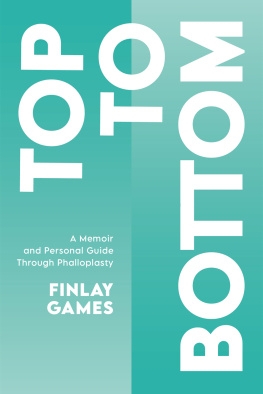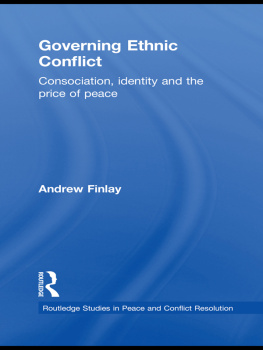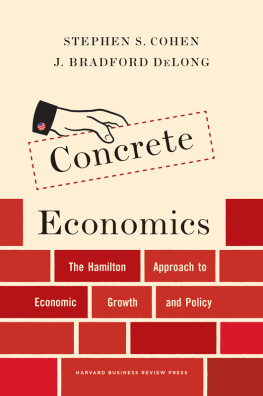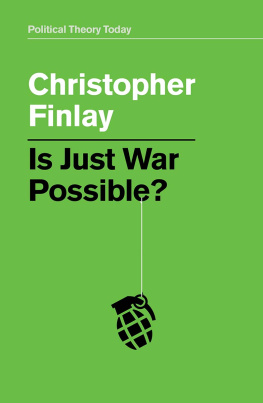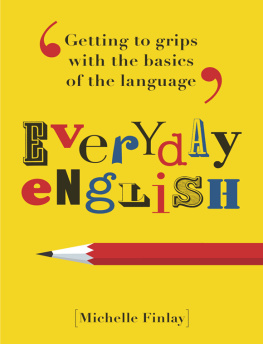Finlay Ian Hamilton - Midway: Letters from Ian Hamilton Finlay to Stephen Bann 1964-69
Here you can read online Finlay Ian Hamilton - Midway: Letters from Ian Hamilton Finlay to Stephen Bann 1964-69 full text of the book (entire story) in english for free. Download pdf and epub, get meaning, cover and reviews about this ebook. publisher: Bitter Lemon Press, genre: Art. Description of the work, (preface) as well as reviews are available. Best literature library LitArk.com created for fans of good reading and offers a wide selection of genres:
Romance novel
Science fiction
Adventure
Detective
Science
History
Home and family
Prose
Art
Politics
Computer
Non-fiction
Religion
Business
Children
Humor
Choose a favorite category and find really read worthwhile books. Enjoy immersion in the world of imagination, feel the emotions of the characters or learn something new for yourself, make an fascinating discovery.

- Book:Midway: Letters from Ian Hamilton Finlay to Stephen Bann 1964-69
- Author:
- Publisher:Bitter Lemon Press
- Genre:
- Rating:5 / 5
- Favourites:Add to favourites
- Your mark:
- 100
- 1
- 2
- 3
- 4
- 5
Midway: Letters from Ian Hamilton Finlay to Stephen Bann 1964-69: summary, description and annotation
We offer to read an annotation, description, summary or preface (depends on what the author of the book "Midway: Letters from Ian Hamilton Finlay to Stephen Bann 1964-69" wrote himself). If you haven't found the necessary information about the book — write in the comments, we will try to find it.
Midway: Letters from Ian Hamilton Finlay to Stephen Bann 1964-69 — read online for free the complete book (whole text) full work
Below is the text of the book, divided by pages. System saving the place of the last page read, allows you to conveniently read the book "Midway: Letters from Ian Hamilton Finlay to Stephen Bann 1964-69" online for free, without having to search again every time where you left off. Put a bookmark, and you can go to the page where you finished reading at any time.
Font size:
Interval:
Bookmark:
MIDWAY


WILMINGTON SQUARE BOOKS
An imprint of Bitter Lemon Press
First published in 2014 by
Wilmington Square Books
47 Wilmington Square
London WC1X 0ET
www.bitterlemonpress.com
Copyright 2014 Stephen Bann
All rights reserved. No part of this publication may be reproduced in any form or by any means without written permission of the publisher
The moral rights of the author have been asserted in accordance with the Copyright, Designs and Patents Act 1988
A CIP record for this book is available from the British Library
ISBN 978-1-908524-355
Designed and typeset by Jane Havell Associates
Printed in Hong Kong
CONTENTS
PLATES
between 224 and 225
IT HAS BEEN an engaging experience as well as a pious duty to edit these letters. They are the opening series out of a total of well over six hundred letters that I received from Ian Hamilton Finlay in the period between 1964 and 2003. That the first set of them dates from half a century ago inevitably means that the incidents of my own early years have been brought back to me, with an uncanny vividness, in the interstices of our correspondence. But the full interest lies, of course, in the absorbing record of Finlays life at a period when he was searching, quite often in a mood of desperation, for a fresh new direction in his work as a poet. That Finlay later became one of the foremost artists of his generation, not just in Scotland but in the broader international context, is now very widely accepted. Through the fine detail of these extraordinary letters, which are an intimate record of the strains, and occasional successes, of this crucial period, the decisive years that contribute to his singular achievement may be retraced.
I recall saying once to Finlay that the special feature of the letter as a literary genre was that one never went back on the first draft to produce a fair copy. He completely agreed. The principle that the letter should be a vehicle for ones first thoughts, and not for secondary revisions, is evident here on a number of levels. It is manifest on the surface of the text, so to speak, when he will query his own spelling, but not correct it, and as often as not turn a query or a mistake into a witty episode of word-play. Moreover, the fact that so many of these letters discuss the various possibilities of presenting his poems in graphic terms ensures that the visual exemplification of his thoughts can never be entirely separate from the concrete issues of poetic form. But the other side of this freedom from restraint is a frank and uncensored disposition to pursue his thoughts in whatever direction they may lead. Finlay was all too well aware that his vehement opinions would not overcome the editorial scruples of the magazines to which he frequently wrote, and the most effective way to manifest his views in the public sphere was often to rely on the device of irony. In these private letters, he had no such inhibition. Figures well known to both of us were often caricatured and sometimes by implacable steps demolished, though it is fair to say that hardly any of them fails to be acknowledged, at some point, in a much more favourable light. That this need to pass harsh judgements was, in part, a factor of Finlays own endemic anxiety seems very clear from a present perspective. Yet there are also the occasions when he sincerely welcomes and responds to a chance visitor (maybe a transatlantic photographer), displaying a warmth and generosity that was always ready to emerge. I myself was never in any doubt of this side of his character.
An overriding dilemma which cannot be ignored in these letters is his troubled and ambivalent relationship with Scotland; or to be more specific, with the Scottish cultural institutions of the period and a wide section of the Scottish literary and artistic community. This is certainly not the place to put forward any broad assessment of his role as a Scottish poet and artist, though something of a basis for doing so can perhaps be found in the complex and contested relationships that are revealed here. Suffice it here to repeat his own words, as quoted in an interview of 1968 in a Scottish newspaper where it was claimed that he was suspicious of any Scottish good will shown to him (see p. ): My work belongs to Scotland. [] Its as Scottish as you can get thatll be recognised tomorrow if not to-day!
*
I wish to record here my gratitude to Sue Swan, whose gracious presence at Finlays side is so often invoked in these letters, and to Alec Finlay, whose arrival in the household gave rise to a spate of hilarious incidents, but whose writing about his father has achieved an altogether serious fulfilment with the editing of the recent Selected Poems.
I am extremely grateful to Pia Simig, on behalf of the Estate of Ian Hamilton Finlay, who has allowed me to publish these letters, and to Elspeth Healey, Special Collections Librarian of the University of Kansas, at which a large proportion of his correspondence from the 1960s is preserved. All but one of the letters dating from before mid-April 1967 are reproduced by Courtesy of Special Collections. The Lilly Library of the University of Indiana, which also contains an extensive Finlay archive dating from 1967 to 1972, helpfully arranged for me to acquire copies of my own letters to Finlay over that period. These enabled me to annotate many of the references that would otherwise have appeared obscure.
For the photographic illustrations, I have attempted without success to trace the authors of several of the photographs. However, I am indebted to Tom Meyer and the Estate of Jonathan Williams for permission to publish the colour photographs taken at Gledfield in 1965. Patrick Eagar most considerately refurbished his memorable photographs of the Brighton festival for this new publication. Juha Virtanen helped me unstintingly with the editorial work, and compiled the index. John Nicoll was trusting enough to encourage the project from its inception and gave valuable advice throughout, while Jane Havell was the books resourceful designer.
Finally, I would like to recognise, and call to mind again, the comradeship of my friends at Cambridge and Duck End, all of whom provided support to Finlay in their different ways, and at varying junctures, in the course of this difficult middle passage of his life as an artist.
Virtually all the letters that are published here are transcribed as nearly as possible in their original form. On a few occasions, a page is missing from a particular manuscript, and this is indicated in the text. Brief messages and notes sent to me over the period, usually consisting of a single sheet of paper or a postcard, have generally been omitted from the correspondence, as have any letters from third parties sent as enclosures. Square brackets are used in the text to indicate editorial interventions. It should be noted that Finlay himself frequently used brackets (here shown as round), for example, to enclose the word sic.
Care has been taken to keep the spontaneity of the writing by retaining the frequent use of ellipses of different lengths (two, three, four or more points) to indicate variable breaks in continuity. Where a misspelling is corrected, or queried, or turned into a pun, the words are retained as written in the text. Finlays delight in the manipulation of words and their deployment in space should become evident, both in the subject matter, and in the graphic form that it sometimes takes.
The letters published here divide broadly into typewritten and handwritten scripts, with the latter, in particular, from time to time including small sketches and examples of hand-drawn lettering. Most of these visual details have been replicated here. The photographic illustrations to the text are in part drawn from originals (taken by Finlay and visiting friends) that were enclosed with his letters to me, and in part from the sets of prints commissioned by Finlay from professional photographers, with the purpose of documenting and publicising his work. Images of the garden at Stonypath (later to be named Little Sparta) are in the main contemporary with the letters, and in no case do they date from later than 1973.
Next pageFont size:
Interval:
Bookmark:
Similar books «Midway: Letters from Ian Hamilton Finlay to Stephen Bann 1964-69»
Look at similar books to Midway: Letters from Ian Hamilton Finlay to Stephen Bann 1964-69. We have selected literature similar in name and meaning in the hope of providing readers with more options to find new, interesting, not yet read works.
Discussion, reviews of the book Midway: Letters from Ian Hamilton Finlay to Stephen Bann 1964-69 and just readers' own opinions. Leave your comments, write what you think about the work, its meaning or the main characters. Specify what exactly you liked and what you didn't like, and why you think so.

![A. K. ]]> - Rough Diamond: The Life of Colonel William Stephen Hamilton, Alexander Hamiltons Forgotten Son](/uploads/posts/book/377309/thumbs/a-k-rough-diamond-the-life-of-colonel.jpg)
